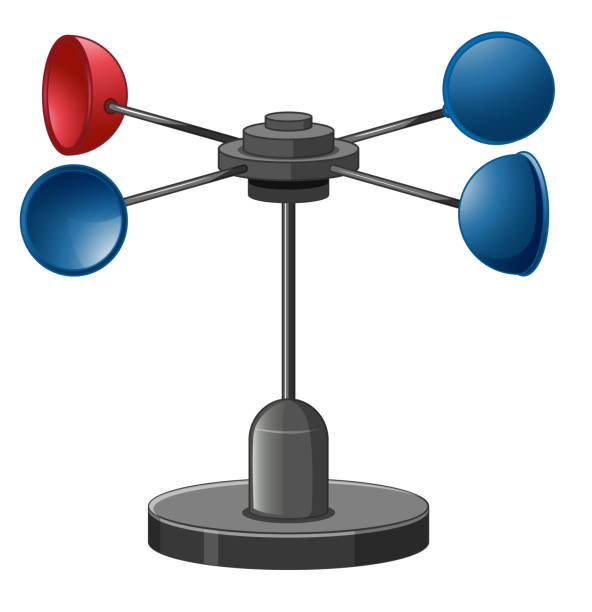Top Features to Seek in a Reliable Anemometer for Accurate Wind Measurement
Top Features to Seek in a Reliable Anemometer for Accurate Wind Measurement
Blog Article
Anemometers Revealed: Recognizing Their Importance in Environmental Surveillance and Precaution
The role of anemometers in ecological surveillance and security actions is often undervalued, yet their importance is indisputable. From weather forecasting to aviation safety and security, anemometers play an important role in supplying precise information that informs decision-making processes and enhances overall safety.
Background of Anemometers
The development of anemometers can be mapped back to the old worlds where fundamental wind gauging tools were first made use of. These early wind measurement tools laid the structure for the development of extra innovative anemometers with time. One of the earliest known anemometers was the hemispherical cup anemometer invented by Leon Battista Alberti in the 15th century. This layout contained 4 hemispherical mugs that gathered wind power, giving a measurement of its strength based on the speed of rotation.
In the 18th century, the prominent scientist John Thomas Romney Robinson introduced the Robinson anemometer, which featured 4 hemispherical mugs mounted on straight arms that prolonged from a main axis. This design became a criterion in meteorological dimensions as a result of its precision and dependability. Over the years, innovations in modern technology caused the advancement of more modern anemometers, including ultrasonic anemometers and laser Doppler anemometers, providing raised precision and performance in determining wind speed and instructions. The history of anemometers showcases an amazing trip of technology and progression in the area of weather forecasting.
Kinds Of Anemometers
Throughout the field of meteorology, numerous sorts of anemometers have been developed to accurately measure wind speed and direction. One of the most typical kind is the mug anemometer, which contains 3 or four cups installed on straight arms that revolve with the wind. As the cups spin, the speed at which they turn is straight symmetrical to the wind rate. One more widely made use of type is the vane anemometer, which includes a tail or fin that aligns itself with the wind instructions. This positioning permits the gadget to establish the wind instructions. Sonic anemometers utilize ultrasonic signals to determine wind rate and instructions properly. They are frequently utilized in study applications because of their high accuracy. Hot-wire anemometers operate based upon the concept that the cooling effect of wind on a heated cord is proportional to the wind speed. These anemometers are ideal for measuring low wind speeds with high precision. Each kind of anemometer has its strengths and is selected based on the details needs of the surveillance task at hand.
Applications in Meteorology
Having discussed the various kinds of anemometers used in meteorology for determining wind rate and instructions, it is crucial to discover their sensible applications in the field. Anemometers play an essential duty in weather forecasting by providing real-time and exact data on wind problems (anemometer). Meteorologists utilize anemometers to keep an eye on wind speed and direction to straight from the source anticipate weather condition patterns, problem warnings for severe weather events like hurricanes, typhoons, and storms, and evaluate weather for aviation security
In meteorology, anemometers aid in understanding regional and regional wind patterns, which are important for predicting climate modifications and figuring out weather fads. These devices are additionally used in research study to research microclimates, city warm islands, and air contamination dispersion. Additionally, anemometers are utilized in agriculture to optimize plant monitoring methods, such as watering and chemical application, based upon wind conditions.
Significance in Aeronautics Safety
An integral element of making certain air travel security hinges on the precise surveillance of wind problems making use of anemometers. Anemometers play a critical function in aeronautics by providing real-time data on wind speed and direction, helping pilots in making informed choices throughout landing, trip, and liftoff. Strong and uncertain winds can dramatically affect airplane operations, making it important for aviation authorities to count on precise wind dimensions to ensure the safety of passengers and crew.

In the dynamic atmosphere of aeronautics, where even small adjustments in wind speed and direction can have profound impacts, anemometers stand as important devices for advertising secure and secure air traveling.
Role in Environmental Research
Anemometers play an important role in environmental research study by supplying important information on wind rate and instructions. By precisely gauging wind features, anemometers help researchers assess the motion of pollutants in the air, assess the influence of commercial emissions, and anticipate the spread of pollutants in the atmosphere.


Final Thought
In final thought, anemometers have played a crucial duty in ecological tracking and safety actions. Understanding the importance of anemometers is crucial for precisely gauging wind speed and direction, which is essential for predicting weather patterns, ensuring secure aeronautics procedures, and performing ecological studies.
One of the earliest recognized anemometers was the hemispherical cup anemometer designed by Leon Battista Alberti in the 15th century. Over the years, innovations in innovation led to the advancement of more contemporary anemometers, including ultrasonic anemometers and laser Doppler anemometers, providing enhanced accuracy and efficiency in gauging wind rate and instructions. Hot-wire anemometers run based on the principle that the cooling result of wind on a warmed cord is proportional to the wind speed. Meteorologists utilize anemometers to keep an eye on wind rate and instructions to anticipate weather condition patterns, concern cautions for extreme climate events like storms, storms, and twisters, and analyze climatic problems for aviation security.
Recognizing the importance of anemometers is important for properly gauging wind speed and instructions, which is essential for predicting climate patterns, making certain risk-free aeronautics operations, and conducting environmental research studies. (anemometer)
Report this page